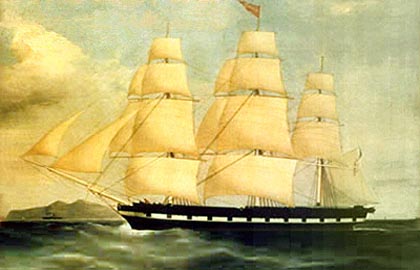
New-York, Thur., Feb. 5, 1885.
Volume ? No. ? Whole No. ?

SOLOMON SPAULDING AND THE BOOK OF MORMON.
BY JAMES H. FAIRCHILD
The theory of the origin of the Book of Mormon in the traditional manuscript of Solomon Spaulding will probably
have to be relinquished. That manuscript is doubtless now in the possession of Mr. L. L. Rice, of Honolulu,
Hawaiian Islands, formerly an anti-slavery editor in Ohio, and for many years state printer of Columbus. During
a recent visit to Honolulu, I suggested to Mr. Rice that he might have valuable anti-slavery documents in his
possession which he would be willing to contribute to the rich collection already in the Oberlin College Library.
In pursuance of this suggestion, Mr. Rice began looking over his old pamphlets and papers, and at length came upon
an old, worn and faded manuscript of about 175 pages, small quarto, purporting to be a history of the migration
and conflicts of the ancient Indian tribes which occupied the territory now belonging to the States of New York,
Ohio and Kentucky. On the last page of this manuscript is a certificate and signature giving the names of several
persons known to the signer, who have assured him that to their personal knowledge the manuscript was the writing
of Solomon Spaulding. Mr. Rice has no recollection how or when this manuscript came into his possession. It was
enveloped in a coarse piece of wrapping paper, and endorsed in Mr. Rice's handwriting, "A manuscript story."
There seems no reason to doubt that this is the long lost story. Mr. Rice, myself and others compared it with the
Book of Mormon, and could detect no resemblance between the two, in general or detail. There seems to be no name
nor incident common to the two. The solemn style of the Book of Mormon, in imitation of the English scriptures,
does not appear in the manuscript. The only resemblance is in the fact that both profess to set forth the history
of the lost tribes. Some other explanation of the origin of the Book of Mormon must be found, if any explanation
is required.
JAMES H. FAIRCHILD.
Note 1: This notice was first published in the
Jan. 1885 issue of a journal published
by Oberlin College, called Bibliotheca Sacra. The appearance of Dr. Fairchild's statement in the
Observer gave it nation-wide distribution and, by the end of February, the notice had been reprinted in
many local and regional papers.
Note 2: Dr. Fairchild made several subsequent statements regarding the possible relationship of the writings of
Solomon Spalding to the text found in the Book of Mormon. By the end of the 1890s his stance on the matter has
evolved to one of cautious indifference and he no longer offered any personal opinion as to whether or not one of
Spalding's manuscripts might have served as the basis for the Mormon book. See, for example,
his 1900 statement, as published by
A. T. Schroeder. His constant opinion was that the Spalding manuscript he discovered in Honolulu in 1884 did not
form such a literary basis. Fairchild, however, was in no position to offer an authoritative opinion on just how
many different manuscript stories Spalding may have written or what might have happened to them after Spalding's
death.
Note 3: The opinion of Fairchild's friend, Lewis L. Rice, also evolved over time, as Rice was able to study the
matter more carefully. Rice's final statement
on the controversy was published in 1886.
|






